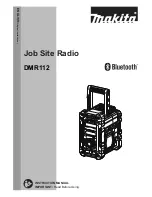
OTHER FEATURES
26
Call Indicator
The call indicator is the word “CALL” in the lower part of the
display. This feature indicates that a call was received while you were
away from the transceiver. It is programmed by your system operator to
turn on when calls are received on certain groups (Multi-Net systems) or
channels (conventional systems). It may also be disabled entirely. This
indication is turned off by pressing any key except backlight. Transceiver
power must be on for this indicator to operate.
RTN (Return) Key
The RTN key is used to quickly display either the “home” or last
active system/group. Programming by your system operator determines
which is selected and also the length of time it is displayed. The system/
group may be displayed briefly (1-7 seconds) or indefinitely so that it is
the new selected system/group. If scanning when the RTN key is pressed,
scanning halts and either the home or last active system/group is
displayed. In addition, when this key is programmed to display the home
system/group, the revert (selected) system/group is also displayed. If the
system/group is displayed indefinitely, scanning automatically turns off.
When the system and group are displayed temporarily, the system and
group that are displayed can be made the selected system and group by
pressing any function key. Pressing the RTN key twice also has this
effect.
Emergency Button
When equipped with this optional switch, high-priority calls can be
placed. This switch can be programmed by your system operator for
manual or automatic operation. When manual operation is programmed,
no call is placed automatically. However, a specific system/group is
selected and the transceiver goes into a high-priority mode that mini-
mizes, as much as possible, the chance that the system will be busy when
a call is placed. When automatic operation is programmed, the trans-
ceiver automatically transmits an emergency message on a specific
system and group at a high priority until an acknowledgment is received
















































